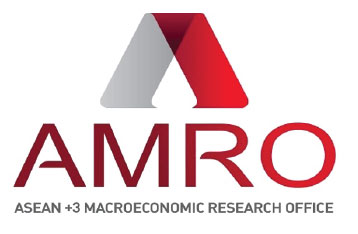Imagine travelling abroad without having to worry about hefty foreign exchange fees when paying for food, souvenirs, or even hotel stays. That vision is quickly becoming a reality as central banks in ASEAN work together to revolutionize cross-border payments.
At the heart of this transformation is the Regional Payment Connectivity (RPC) initiative, launched in late 2022. This initiative tackles long-standing challenges in cross-border transactions, where payments often rely on multiple banking intermediaries and the conventional use of the US dollar. By enabling payments in local currencies, RPC eliminates unnecessary steps, reducing both costs and transaction time.
A more efficient payment system
Traditionally, cross-border payments within ASEAN have been fragmented, slow, and costly. A buyer in one country making a payment to a seller in another typically involves multiple banks and currency conversions, leading to high fees and delays. With RPC, however, payments can be made directly in local currencies.
For example, if a Thai buyer purchases a product from Malaysia, RPC enables the buyer to pay in Thai baht, while the Malaysian seller receives payment in Malaysian ringgit. This process enables faster, cheaper, and more transparent cross-border payments while promoting financial inclusion, especially for micro, small, and medium enterprises (MSMEs).
Expanding regional cooperation
ASEAN members have been leading this initiative, with Indonesia, Malaysia, the Philippines, Singapore, and Thailand signing a memorandum of understanding (MOU) in 2022. The commitment to RPC was reinforced at the 42nd ASEAN Summit in 2023, where regional leaders collectively committed to enhancing regional payment connectivity and promoting local currency transactions, leading to the inclusion of more members to the network. Today, eight ASEAN members are part of RPC, demonstrating the region’s strong push for cross-border payment integration using local currencies.
Before RPC, cross-border payments faced numerous obstacles, including:
- High transaction fees due to multiple intermediaries
- Slow processing times for payments and settlements
- Limited interoperability between different banking systems
- Regulatory differences that hindered the development of a unified payment system
By addressing these challenges, RPC is creating a more efficient, cost-effective, and secure payment ecosystem.
The role of QR payments
A key focus of RPC has been the standardization of Quick Response (QR) payments. This contactless payment method is being integrated across participating central banks to standardize national payment systems through a common QR code format, ensuring seamless cross-border transactions. Currently, several QR code systems have already been connected, including Cambodia’s KHQR, Indonesia’s QRIS, Lao PDR’s Lao QR, Malaysia’s DuitNow, the Philippines’s QR Ph, Singapore’s PayNow, Thailand’s PromptPay, and Vietnam’s VietQR. Japan is also reportedly exploring the integration of its QR payment system into RPC, with full implementation by the end of 2025.
With Indonesia, Malaysia, the Philippines, Singapore, and Thailand leading the effort, regional payment connectivity has seen rapid improvement in recent years. By establishing bilateral and multilateral linkages through instant payment systems, consumers and businesses can perform real-time currency conversions via banking apps. As a result, cross-border QR payments have become more seamless.
Beyond government efforts, private financial institutions are also playing a role in expanding RPC. Companies like Visa and SWIFT are working to align their services with RPC objectives. As RPC adoption grows, more banks and financial service providers are joining the network, strengthening regional financial infrastructure and regulatory frameworks.
Challenges and future direction
While RPC is making good progress, some challenges, including fragmented systems, regulatory alignment, and cybersecurity remain. As more bilateral arrangements are added under the RPC, the complexity of integration increases. Besides, the pace of RPC adoption depends on various factors, including the level of engagement from central banks and regulators, technological capacity for payment integration, security and fraud prevention measures, and collaboration between central banks and fintech partners. In particular, the full implementation of the ASEAN QR standard is not yet complete.
A crucial initiative for the future of RPC is Project Nexus, led by the Bank for International Settlements (BIS) Innovation Hub. This project aims to create a global framework for cross-border payments, connecting domestic Instant Payment Systems efficiently. Unlike current bilateral arrangements, Project Nexus offers greater efficiency and scalability, enabling ASEAN central banks to manage cross-border payments and fund transfers across the region and beyond.
Key takeaways
The idea of global payment integration system is not new. After World War II, economist John Maynard Keynes proposed a global payment system using a common currency to balance trade. However, Keynes’ plan was not accepted and the Bretton Woods system which lacked the balancing mechanisms was adopted instead. Separately, the European Payments Union (EPU), which operated from 1950 to 1958 before it was replaced by the European Monetary Agreement, incorporated some features of this global system. Even today, it is seen as a model for promoting regional trade.
ASEAN could take inspiration from such models and the longstanding discussion on a regional currency unit to further reduce transaction costs and exchange rate risks, making regional trade even smoother.
The main benefit of a well-functioning regional payment system is that it can lower transaction costs and reduce capital flow volatility. To achieve this, it is important to create effective incentives for countries to use the regional payment system. As more countries join RPC and initiatives like Project Nexus take shape, ongoing collaboration among ASEAN members is essential to accelerate the integration process. While challenges remain, continued collaboration between governments, central banks, and private sector players will be key to realizing the full potential of this initiative. In the future, seamless, borderless payments across ASEAN could become the norm—creating new opportunities for businesses, travelers, and the broader economy.
